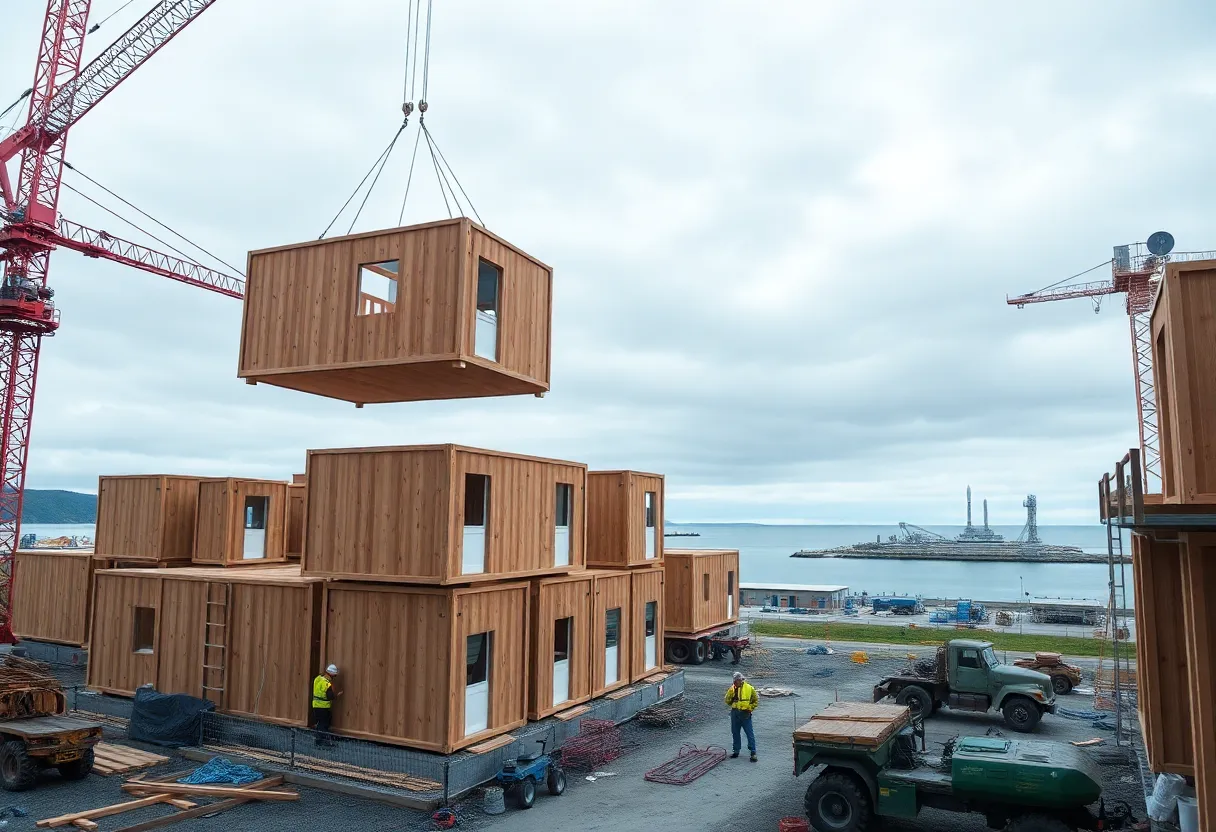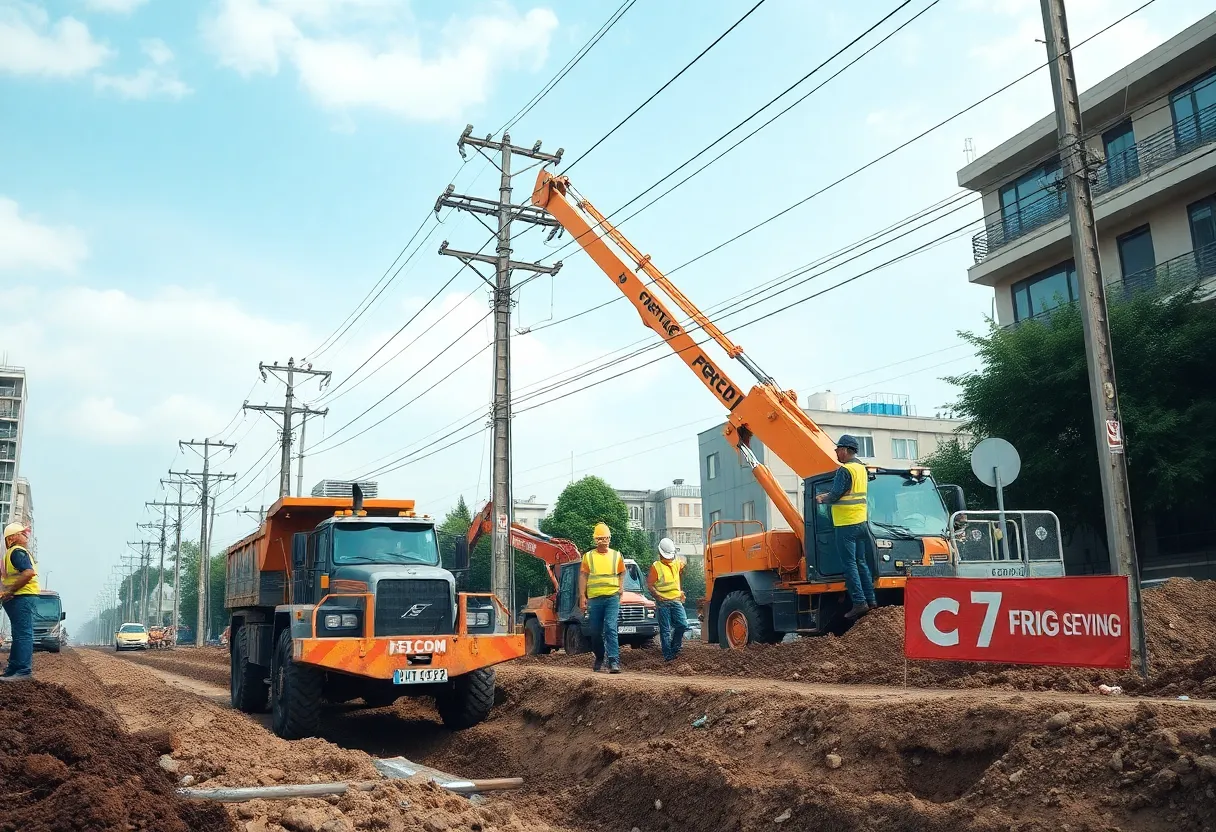Canada, August 19, 2025
News Summary
Canada’s housing sector is at a pivot point as affordability pressures persist despite modest productivity gains and faster modular build times. Builders report improved outcomes from AI, BIM and digital twins while offsite methods cut completion times and costs. At the same time, purpose-built rental development is cooling as institutional returns fall and financing tightens. Regional activity is uneven—Montreal and prairie centres see multi‑unit growth while Toronto and Vancouver face slumps. Atlantic provinces are refocusing immigration on key occupations, and a private spaceport project in Newfoundland signals new industrial investment alongside housing policy efforts to boost supply.
Canada’s housing crossroads: small productivity gains, modular wins, rental pullbacks, regional starts surge and a new Atlantic spaceport
Canada’s housing picture is shifting in several directions at once. At the top level, the market still struggles with affordability in major cities while modest productivity gains and wider use of modular construction are cutting build times. At the same time, some large rental developers are pulling back as returns weaken, yet housing starts have jumped in some regions while a new spaceport in Newfoundland adds an unexpected industrial development story. Policy changes, technology and regional demand are all shaping what comes next.
Big picture: affordability, productivity and policy
Housing remains hard to afford in big markets, with home prices in cities such as Toronto and Vancouver staying high even as demand cools. Policymakers and builders are counting on productivity improvements to ease costs. The Canada Construction Labour Productivity Index stood at 92.47 in March 2025, a 2.15% year-over-year gain on a scale that uses 2007 = 100. Despite that gain, the sector still trails the U.S. and faces a slow technology rollout and a fragmented small- and medium-enterprise landscape.
Where technology and modular methods matter
Construction leaders widely see digital tools as essential. A recent survey found strong agreement that AI, BIM and digital twins are important, and most companies that invested in such tools reported measurable productivity improvements. When combined with modular construction and government supports like the Rapid Housing Initiative, projects have cut build-to-occupancy times by as much as 40%. One modular example completed in 12 months is Regina’s Horse Dance Lodge. AI-driven design checks, IoT sensor networks and digital twins are also reducing costly errors and enabling predictive maintenance — all of which reduce on-site labour needs and streamline workflows.
Rental development pullback and financing strain
At the same time, institutional appetite for new rental towers has cooled. Some developers who once pushed into purpose-built rental are stepping back or changing strategies. One major developer announced plans in May 2025 to sell existing rental buildings and shift to deals where outside investors provide most capital while the company contributes land and know-how. Institutional investors have been discouraged by narrow returns now reported as low as 4.5% annually. Higher interest rates since March 2022, falling rents in Toronto and Vancouver, sticky development costs and slower-than-expected rent growth are making financing and returns harder to achieve. Public figures suggest rental starts are strong on paper, but tracking of earlier-stage projects shows a roughly 60% plunge in new rental starts at early stages.
Regional diverging trends and construction activity
The market is fragmenting. Toronto and Vancouver show oversupply and price erosion, while Calgary and Montreal are cited as more resilient markets. Nationally, CMHC reported July housing starts at a seasonally adjusted annual pace of 294,100 units, up 3.7% from June. In population centres the actual number of units started rose by 4% in July with 23,464 units breaking ground. Montreal’s starts jumped dramatically, driven by multi-unit projects, while Toronto saw a year-over-year slump of 69%. Analysts note that current tallies reflect investment decisions made months or years earlier, and expect building permit data to keep starts near current levels short-term but to cool in 2026 as population growth slows and asking rents drop in some areas.
Government plans and incentives
The federal government has a major housing plan with a $129 billion allocation that aims to double construction output to 500,000 units a year by 2030, with a focus on modular construction and mass timber. Provincial measures vary and include examples such as halving development charges for multi-unit housing and removing GST on homes under $1 million in some cases. Federal supports also include measures to scrap GST on new rental buildings and provide low-cost construction finance through the national housing agency.
Labour, training and investor guidance
Workforce development will be key. Apprenticeships and diversity, equity and inclusion programs are needed to keep productivity gains on track. Investors are being told to weigh companies that adopt productivity-boosting tech early, look to high-growth regions, and consider public‑private partnerships, while watching regulatory delays and labour shortages as chief risks. A modeling example suggests a 1% drop in unit labour costs could lower home prices by about 1.2%, underlining the investor case for productivity.
Housing market quirks: tenants, completions and incentives
Canada’s population grew by 1.3 million in 2023, but other shifts matter. Many landlords were able to raise rents substantially at turnover during a recent period, yet international student numbers have fallen sharply, with around 155,000 leaving in recent quarters. A surge in condo completions and generous move-in incentives—two months free rent and free parking in many new Greater Toronto Area buildings—are softening rental demand. Land prices for zoned multi-family lots have fallen notably, and construction costs are beginning to ease, but municipal development charges remain a steady cost.
Spaceport builds and regional industrial growth
In a separate development, a private Canadian company began construction on an Atlantic spaceport complex in Newfoundland and Labrador near St. Lawrence. The first $10 million phase includes two facilities: a launch complex with two orbital pads and a second site for suborbital flights and tracking. The site can support orbital launch inclinations between 46° and 100°, and the company says rockets will be built largely from Canadian-sourced parts including in-house 3D-printed engines. The initial suborbital vehicle has a launch window opening on Aug. 25 for a low-altitude demo, with a second test planned early the next year. The firm envisions an eventual orbital vehicle comparable to Rocket Lab’s Electron and anticipates job creation and economic activity through 2035. Another Atlantic company also continues to develop a separate launch site.
What this means now
The next few years look like a test of whether technology and policy can offset softening investor returns and regional shifts. Those who invest in construction firms that adopt productivity tools early, and who focus on regions with strong fundamentals, are positioned to capture long-term value if funding and labour align. At the same time, current slowdowns in rental starts risk a future gap in supply because projects take time to restart, which could worsen shortages years down the road.
FAQ
What is driving recent productivity gains in construction?
Improved use of AI, BIM, digital twins, IoT sensors and modular construction is raising efficiency. More than 80% of firms that invested in these tools reported measurable gains, and modular projects have cut build times by up to 40% in some cases.
Are rental developers stopping all projects?
Not all projects are stopping, but many developers face tighter returns and have reduced new starts. Public figures can look strong because they count projects already rising above ground, while early-stage approvals and new starts have declined substantially—roughly 60% in some tracking.
How are regional markets different?
Toronto and Vancouver show oversupply and falling prices, while Calgary and Montreal are relatively stronger. National starts rose in July to a high pace, but the growth is uneven across regions.
What is the Atlantic Immigration Program change?
With a reduced allocation in 2025, Atlantic provinces are prioritizing certain occupations like healthcare, construction and manufacturing. The AIP remains an employer-driven pathway that offers faster processing and LMIA-exempt work permits for eligible candidates.
Why does the new spaceport matter for construction?
The spaceport brings specialized infrastructure jobs, new industrial activity in Newfoundland, and local demand for heavy civil work, tracking infrastructure and facilities tied to rocket assembly and testing.
Key features at a glance
| Feature | Detail |
|---|---|
| Productivity Index | Canada Construction Labour Productivity Index 92.47 (March 2025), up 2.15% year-over-year (2007 = 100) |
| Build-time gains | Modular methods and tech have cut build or occupancy times by up to 40%; example project finished in 12 months |
| Rental returns | Institutional returns on rental development as low as 4.5% in some cases; financing and rent pressure in Toronto and Vancouver |
| National starts | July annualized starts 294,100 units; actual starts in centres 23,464 units; Montreal starts up 212%, Toronto down 69% |
| Federal housing plan | $129 billion plan aiming for 500,000 units per year by 2030, with focus on modular and mass timber |
| New Atlantic spaceport | First $10M phase: two orbital pads and a suborbital/tracking site; supports inclinations 46°–100°; early test flight window Aug. 25 |
Deeper Dive: News & Info About This Topic
Additional Resources
- The Globe and Mail: Rental-apartment construction, developers and market shifts
- Wikipedia: Construction industry of Canada
- MSN: Prairie housing starts drive Canada-wide residential construction increase
- Google Search: Canada housing starts prairie provinces 2025
- Space.com: Canada’s 1st commercial spaceport is under construction
- Encyclopedia Britannica: Spaceport
- CIC News: Atlantic Immigration Program — priorities for 2025
- Google Scholar: Atlantic Immigration Program 2025 labour market
- ConstructConnect: Canada’s in need of a contech and proptech revolution
- Google News: contech proptech Canada 2025
Author: Construction NY News
The NEW YORK STAFF WRITER represents the experienced team at constructionnynews.com, your go-to source for actionable local news and information in New York and beyond. Specializing in "news you can use," we cover essential topics like product reviews for personal and business needs, local business directories, politics, real estate trends, neighborhood insights, and state news affecting the area—with deep expertise drawn from years of dedicated reporting and strong community input, including local press releases and business updates. We deliver top reporting on high-value events such as the New York Build Expo, infrastructure breakthroughs, and cutting-edge construction technology showcases. Our coverage extends to key organizations like the Associated General Contractors of New York State and the Building Trades Employers' Association, plus leading businesses in construction and real estate that power the local economy such as Turner Construction Company and CMiC Global. As part of the broader network, including constructioncanews.com, constructiontxnews.com, and constructionflnews.com, we provide comprehensive, credible insights into the dynamic construction landscape across multiple states.





